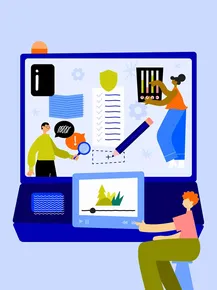To support this, we partnered with third-party experts in fields like child development, emerging media and digital wellbeing to create a set of quality principles for kids and family content. These best practices can help guide creators who create quality content for kids. They’re also intended to support child development and wellbeing by promoting things like being a good person through modeling respect or healthy habits, learning and curiosity, play and imagination and diversity. Our systems promote content in line with these principles, like Cosmic Kids Yoga, who encourages movement and mindfulness through storytelling.
“YouTube is setting an outstanding example for industry in its level of commitment to working through the challenges of supporting kids and families. Routinely collaborating with experts in child development and digital practice and activating the resulting insights into the development of products, is a unique approach to problem solving for children’s needs around the world. One in three new users of the internet is a child so it’s critical that platforms put children at the heart of their products. The numbers shared today show the impact of the collaboration with academic experts and how effectively it is changing the ecosystem for the better.” – Amanda Third, PhD, Professorial Research Fellow in the Institute for Culture & Society


